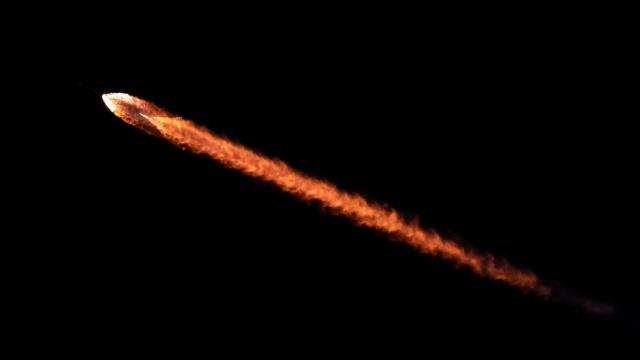Around 11 miles above Earth’s surface, leftover bits from rockets and spacecraft are lingering in our planet’s atmosphere that could potentially have a lasting effect on the climate.
A group of scientists flew a sensitive tool attached to the nose of a special research plane, sniffing out aerosols in the atmosphere. They found significant amounts of aluminium and exotic metals in Earth’s stratosphere, which could alter the second layer of the atmosphere, according to a new study published Monday in the Proceedings of the National Academy of Sciences.
The team behind the study was able to match the rare metals found in Earth’s upper atmosphere to the ones used in rockets and satellites. The vaporized metal likely originated from spacecraft burning up upon reentry through the atmosphere, according to the researchers.
“We are finding this human-made material in what we consider a pristine area of the atmosphere,” Daniel Cziczo, professor and head of the department of Earth, Atmospheric, and Planetary Sciences at Purdue University, and co-author of the new study, said in a statement. “And if something is changing in the stratosphere—this stable region of the atmosphere—that deserves a closer look.”
Scientists have long suspected that Earth’s upper atmosphere might be changing as a result of the burgeoning space industry, but this area, which extends up to 51 kilometres above the surface, is quite challenging to study. In order to test that theory, the team behind the study operated a NASA WB-57 aeroplane to sample the atmosphere 19 kilometres above the ground in Alaska.
The metals were found in about 10% of sulfuric acid particles, which make up the majority of particles in the stratosphere and help protect and buffer the ozone layer. The team detected more than 20 elements within ratios that match those used for spacecraft, with lithium, aluminium, copper, and lead from spacecraft reentry far exceeding metals found in natural cosmic dust.
There was a record-breaking 180 rocket launches in 2022, 44 more compared to 2021. That number is only expected to increase as the space industry continues to launch more satellites and spacecraft to Earth’s orbit and beyond. “Just to get things into orbit, you need all this fuel and a huge body to support the payload,” Cziczo said. “There are so many rockets going up and coming back and so many satellites falling back through the atmosphere that it’s starting to show up in the stratosphere as these aerosol particles.”
The stratosphere is home to the ozone layer, which absorbs a portion of the Sun’s radiation before it reaches Earth’s surface. The ozone layer protects all living things on Earth and, without it, life would have likely never existed on this planet.
“Changes to the atmosphere can be difficult to study and complex to understand,” Cziczo said. “But what this research shows us is that the impact of human occupation and human spaceflight on the planet may be significant—perhaps more significant than we have yet imagined. Understanding our planet is one of the most urgent research priorities there is.”
